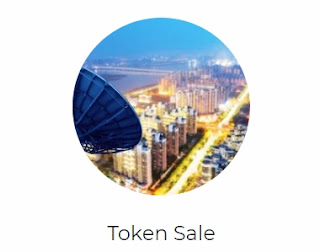The internet’s largest and most important —and yet unsung —champions are the privately owned submarine cables that orbit the Earth. Land links between cities and cables that run alongside roads and into houses and offices arecertainly impressive —and without them we wouldn’t have aninternet! —but sinking a cable into the Atlantic, Pacific, Indian, and even Arctic Oceans requires a billion-dollar logistical feat that requires years to enact.
Submarine cables are just three inches thick, carry just a few optic fibers, and have total capacities of between 40Gbps and 10Tbps, and latencies that are close to the speed of light and just a few milliseconds in duration. To get from Johannesburgto Beijing, packets can traverse Europe, the Mediterranean, the Red Sea, the Arabian Sea, the Indian Ocean, and finally the South China Sea —or they can hop across the Atlantic, the entirety of continental North America, and then long haul over the Pacific.These cables shouldn’t run out of capacity any time soon, we’re already at the stage where we can send 100Gbps over a single fiber, and graphene optical switches should expand the total capacity of submarine cables (and the terminating routers) into thepetabit-and exabit-per-second range.----Sebastian Anthony: The secret world of submarine cables
Who Is MOYA ?
Company
Moya has a proven track record of developing new partnership opportunities as well as adding value to its partner’s businesses. Moya’s founders are seasoned Pan-African ICT professionals, experienced in developing and managing ICT companies that deliver enhanced returns while underpinning Continental development. Providing services for over 9 years, serving the data communications needs of carriers, mobile companies, marketing operators and government clients across Africa, Moya partners with existing Government and Private Telecommunications Companies bringing its substantial experience to deploy telecommunications services in Africa.
Moya's list achievements for their Partners includes developing systems and procedures to provide access to the WACs Submarine Cable Capacity through its partnership with Broadband Infraco in West and Southern Africa. Developing systems and procedures to provide access to the Africa Coast to Europe Submarine Cable System in West Africa. Moya will provide access to ACE Submarine Cable Capacity through its partnership with ACE members in Southern Africa.
Problem
The low Datapenetration rate in Southern Africa compared to levels elsewhere clearly indicates the pent-up demand for broadband connectivity. ACE’s entry into the SouthernAfrican market is vital to meet this demand. Africa’s Internet capacity requirements have exploded over the last decade. Applications such as Facebook, Skype and Mobile Money have fueled the rapid increase in customer data demand in Africa.
Currently, there is little price transparency within the Southern African wholesale markets targeted by Moya primarily due to the lack of competition. Cables such as SAT-3 and WACs until recently have held unchallenged market positions, which has resulted in data pricesthat are between 10 to 20 times more expensive than those in markets outside of Africa. Market research carried out on behalf of Moya currently estimates the cost of a single STM-1 for international connectivity to Africa to be US$115,000 per month. The current market price for satellite access to Africa is between US$4,000 and US$8,000 per Mbps per month.
Solution
Moya has several contracts in place for the supply of submarine and terrestrial cable capacity. Using submarine capacity contractually obtained from ACE and terrestrial capacity obtained from Broadband Infraco (BBI). Moya will offer a range of lower priced world class Synchronous Digital Hierarchy (“SDH”) and Internet Protocol (“IP”) network transport services that are designed to meet the needs of a wide range of African Internet Service Providers (ISP’s),international carriers, content providers, large multi-national businesses and governments.
The Moya product portfoliowill focus on the ISP and carriercommunity and offer enterprise class services for sale directly and through partner channels. Moya haspresold the full range of traffic type capacities, including voice, video, data and Internet to customers.
Submarine Cable Technology
Submarine cables can have total lengths over 21,000 km (13,000 miles), terabits of information move from one side of the planet toanother. Submarine cables are just three inches thick, carry just a few optic fibers, and have total capacities of between 40Gbps and 10Tbps, and latencies that are close to the speed of light and just a few milliseconds in duration. As far as laying a submarine cable, specialized cable-laying ships must be used —andwhen a cable is broken (usually by a trawler, another special ship must be used. This generally means that laying a cable is logistically challenging and very expensive.
ACE deploys thelatest fiber optic technologydeveloped by Alcatel-Lucent. Fiber optic offers better high-speed broadband internet quality than satellite and at alower cost. The ACE cable will extend over17,000 kmfrom Penmarch in Brittany, France, to Cape Town in South Africa, at depths close to6,000 meters below sea level.
Itswavelength-division multiplexing (WDM) technology makes it possible to increase its capacity according to various needs and to the latest technological improvements by upgrading station equipment without any submarine cable modifications. With apotential capacity of 12.1 Tbps made possible by the new 100 Gbpstechnology, ACE will be able to evolve with new technological developments using regularupgrades. The ACE system will also facilitate connectivity with terrestrial fiber optic cables.
Moya's backhaul network (to transport the capacity from the beach landing Inland) will also utilize the fibre of a number of Southern African terrestrial fibre providers. Moya’s terrestrial backhaul network will cover all nine provinces, major cities and towns of South Africa and will extendto provide fibre connectivity to Botswana, Lesotho, Mozambique, Namibia, Swaziland and Zimbabwe. The backhaul network is based on variety of technology portfolios, including Synchronous Digital Hierarchy (SDH), Dense Wavelength Division Multiplexing (DWDM) or Optical Transport Network (OTN) and Carrier Ethernet.
Token Sale
Moya Token (MTK) issuance will fund the purchase of ACE submarine cable capacity, terrestrial fibre capacity and the operations of Moya.
Moya Token ownership will entitle the holder the right to receive 20% of Moya's profit on an annual basis, proportional to the number of tokens owned.
Start date: 15th Nov 2017 12:00 GMT
End date: 16th Jan 2018 12:00 GMT
Distribution cap: 100 million MTK
Accepted currencies: BTC, ETH
Token exchange rate: 0.04 BTC / 1 ETH = 1,000 MTK
Amount of tokens per person: unlimited
Minimum transaction amount: 0.0012 BTC / 0.03 ETH
Maximum transaction amount: unlimited
Week 1 - 2: 30% bonus
Week 3 - 4: 20% bonus
Week 5 - 6: 15% bonus
Week 7 - 8: 10% bonus
 |
| https://token-sale.moyanetworks.com/ |
For More Information :
Website : https://moyanetworks.com/
My Bitcointalk Profile : https://bitcointalk.org/index.php?action=profile;u=1210304












Tidak ada komentar:
Posting Komentar